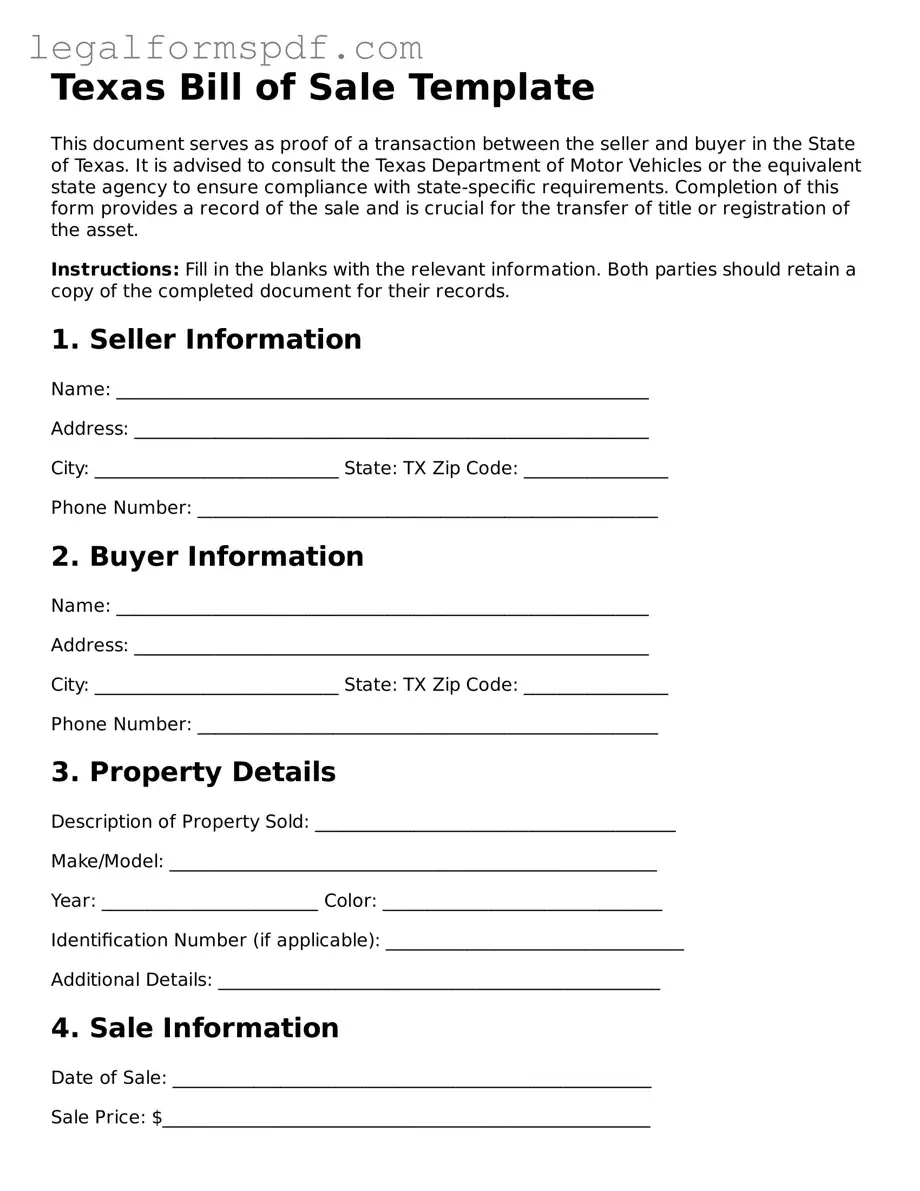What is a Texas Bill of Sale form?
A Texas Bill of Sale form is a legal document that details the transfer of ownership of an item from one party to another. It is commonly used for the private sale of vehicles, boats, firearms, and other valuable items. This document serves as proof of purchase and can be used for registration, tax collection, and legal protection.
Is a Bill of Sale legally required in Texas?
While Texas law does not require a bill of sale for all transactions, it is strongly recommended to have one for the private sale of vehicles, boats, and firearms. For vehicles and boats, it provides essential information required for registration. For firearms, it acts as a record of the sale which can be important for legal protection.
What information should be included in a Texas Bill of Sale form?
A comprehensive Texas Bill of Sale form should include the following information: the date of sale, full names and addresses of the seller and buyer, detailed description of the item being sold (including make, model, year, and VIN or serial number if applicable), sale price, and signatures of both the seller and buyer. Additionally, it may include terms of the sale and any warranties or as-is statements.
Do both parties need to sign the Texas Bill of Sale form?
Yes, for the document to be considered valid and to offer legal protection, both the seller and the buyer must sign the Texas Bill of Sale form. Additionally, including the print names of both parties can provide clarity.
Does a Texas Bill of Sale form need to be notarized?
Notarization is not a legal requirement for a Bill of Sale in Texas. However, having the document notarized can add an extra layer of security and authentication, ensuring that the signatures on the document are genuine.
Can I create a Texas Bill of Sale form myself?
Yes, you can create a Texas Bill of Sale form yourself. The form does not have to follow a standard format, but it must contain all necessary information such as the parties' information, detailed description of the item, sale price, and signatures. It is advisable to use a template or seek legal guidance to ensure the document meets all requirements.
How do I register a vehicle with a Bill of Sale in Texas?
To register a vehicle in Texas with a Bill of Sale, you must provide the Texas Department of Motor Vehicles (DMV) with the completed Bill of Sale form, along with the vehicle's title, a completed application for Texas title, proof of insurance, and payment for all applicable fees. The Bill of Sale alone is not enough to prove ownership; the title transfer must be completed.
Can a Texas Bill of Sale form be used as proof of ownership?
A Texas Bill of Sale form can be used as proof of purchase but cannot serve as the sole proof of ownership, especially for vehicles and boats. For these items, the title document is the official proof of ownership. However, the Bill of Sale is an important supporting document in ownership and registration processes.
What should I do if I lose my Texas Bill of Sale?
If you lose your Texas Bill of Sale, it is advisable to contact the other party involved in the transaction to see if they have a copy. If both parties have lost the document, drafting and signing a new Bill of Sale, containing the same information as the original, is recommended. For added security, both parties might consider having the document notarized.
